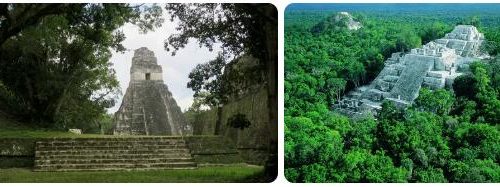
Liechtenstein Politics
Politics
According to the constitution of October 5, 1921 (revised several times), the Principality of Liechtenstein is a constitutional monarchy, hereditary in the male line of the House of Liechtenstein, on a parliamentary-democratic basis. State authority is anchored in the prince and in the people. The ruling prince has a strong position as head of state. He concludes international treaties, exercises the right to pardon, has the right to initiate and sanction legislation, can issue ordinances, dismiss the government, convene, adjourn and dissolve parliament and by means of emergency ordinances (without parliamentary participation, but with countersignature of the head of government) rule alone. The people exercise their co-determination through elections as well as extensive possibilities of legislative and constitutional initiatives and referendums. Since 2003, citizens entitled to vote have been able to express their distrust in the head of state and take an initiative to abolish the monarchy. The legislative body is the state parliament (25 members elected for 4 years according to the proportional representation system; an 8% clause applies). All citizens who have reached the age of 20 are eligible to vote and passively; Women’s suffrage has existed at the state level since 1984 and at the municipal level since 1986. Every law requires the approval of the head of state. The executive power lies with the government college (head of government and 4 government councilors), which is appointed by the sovereign prince for the duration of the legislative period at the suggestion of the state parliament. Liechtenstein is diplomatically represented abroad by Switzerland (own representations in Austria and at the Holy See).
National symbols
The national flag was introduced in 1921; it is divided blue over red. In 1937 the golden prince’s crown was inserted in the leech of the blue stripe.
According to allcitycodes, the coat of arms of the principality is that of the Austro-Moravian House of Liechtenstein. The square shield with the tip grafted in lies on one of the prince’s hats falling coat of arms. The first field shows the Silesian coat of arms (crowned, gold-armored black eagle on a gold background), the second that of the Kuenringer (gold-black divided eight times, covered with a slightly curved green diamond wreath). The third field is formed by the coat of arms of Troppau (split in red and silver), the fourth is occupied by the coat of arms of the county of East Friesland (crowned, gold-armored black virgin eagle on a gold background). The grafted blue tip shows a golden hunting horn, the coat of arms of the Duchy of Jägerndorf. In the middle of the shield is the heart shield of the family coat of arms of the House of Liechtenstein, divided in gold and red, which was introduced in 1957 as a small national coat of arms – provided with a prince’s hat.
On August 15, Prince Franz Joseph II is commemorated, whose birthday was officially celebrated on the Assumption of Mary.
Parties
The party landscape is shaped by the Fatherland Union (VU, founded in 1936) and the Progressive Citizens’ Party (FBP, founded in 1918). Other parties are the populist group The Independent (DU, founded in 2012) and the green alternative Free List (FL, founded 1985).
Unions
The Liechtenstein Workers’ Association (LANV; founded in 1920) is responsible for all industries and professions.
Military
Despite the constitutionally enshrined general conscription, Liechtenstein no longer has its own armed forces since 1868, but only a permanent police force of a few men.
Administration
Liechtenstein consists of 11 municipalities with a pronounced right of self-government. They are spread over the two constituencies of Unterland (rule Schellenberg) and Oberland (county Vaduz).
Vaduz
Vaduz [ f- ], capital of the Principality of Liechtenstein, with (2017) 5 500 residents. The city lies in the valley of the Alpine Rhine and is dominated by the Prince’s residence (Vaduz Castle). In Vaduz there is a university, a princely collection of paintings and the state museum. Vaduz, togetherwith the neighboring Schaan to the north,is Liechtenstein’s largest industrial location.
You May Also Like

Adina Reyter Fashion Jewelry
April 25, 2015
Central America Geography
September 26, 2022

